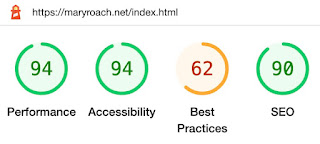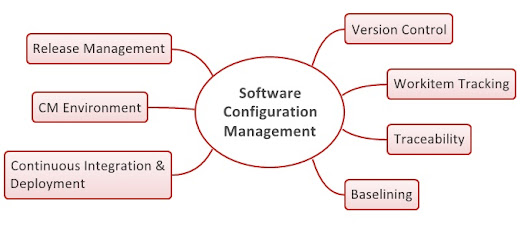Jerry Yoakum's thoughts on software engineering and architecture from experience working with code, computer science, python, java, APIs, NASA, data mining, math, etc.
Saturday, March 05, 2022
If it ain't broke, don't fix it
Tuesday, March 01, 2022
Validation and Verification
Large software developments need as many checks and balances as possible to ensure a quality product. One proven technique is the use of an organization independent of the development team to conduct validation and verification (V&V). Validation is the process of examining each intermediate product of software development to ensure that it conforms to the previous product. For example, validation ensures that software requirements meet system requirements, that high-level software design satisfies all the software requirements (and none other), that algorithms satisfy the component's external specification, that code implements the algorithms, and so on. Verification is the process of examining each intermediate product of software development to ensure that it satisfies the requirements.
You can think of V&V as a solution to the children's game of telephone. In telephone, a group of children form a chain and a specific oral message is whispered down the line. At the end, the last child tells what he or she heard, and it is rarely the same as the initial message. Validation would cause each child to ask the previous child, "Did you say x?" Verification would cause each child to ask the first child, "Did you say x?"
On a project, V&V should be planned early. It can be documented in the quality assurance plan or it can exist in a separate V&V plan. In either case, its procedures, players, actions, and results should be approved at roughly the same time the software requirements specification is approved.
Reference:
Wallace, D. and Fujii, R., "Software Verification and Validation: An Overview," IEEE Software, May 1989.
Monday, February 28, 2022
BIOS Update
The day before going on a week-long work trip I updated my laptop's BIOS. This image is what came up on restart. Luckily, it wasn't an issue but I did start to sweat a little when I saw that unexpected message.
Sunday, February 13, 2022
Twitter Card Meta Tags
My girlfriend likes to say that I'm, "such a fanboy" of Mary Roach. Maybe so. I was going to make a Twitter post referencing Mary's website and I noticed that there was no twitter card! 🙀
So, I'm going to use my tech skills and Mary Roach's website to [hopefully] do some good and provide a walkthrough on making a better website. Yeah, yeah, I know what you are thinking. Someone using blogspot can't talk about making a better website. My response to that is that it is an example of finding balance between cost, effort/time, and quality - the holy grail in software engineering.
I love the look of Mary's website. Simple, clean design with easy to read source code. But I've noticed a couple things that I'm confident that she'll want to address:
- No twitter card meta tags.
- No favicon.
Twitter Card Meta Tags
- <meta name="twitter:card" content="summary_large_image">
- <meta name="twitter:creator" content="@mary_roach">
- <meta name="twitter:description" content="Mary Roach, Author of Fuzz, Grunt, Packing for Mars, Stiff, Spook and Bonk.">
- The content here should be different on every webpage. Ideally, it would be different from the meta description tag too. BTW, Mary, you're missing that tag too and you'll want it to improve your SEO score/ranking. This tag is an opportunity to make custom descriptions just for Twitter.
- <meta name="twitter:title" content="Mary Roach, Author of Fuzz, Grunt, Packing for Mars, Stiff, Spook and Bonk">
- Again, the title should be different on every webpage. Side note: Mary, I'm so sad to see that you didn't use an Oxford comma in the title of your index page... I've read Spook and Bonk but have yet to find a copy of Spook and Bonk. Before you say anything, yes, I have heard "Oxford Comma" by Vampire Weekend. I love their sound.
- <meta name="twitter:image" content="https://maryroach.net/images/books/Fuzz_350.jpg">
- I'm going to keep saying it - use a different image for every webpage and if you are going to use an og:image tag for FaceBook as well then take the opportunity to make it different, make it special and specific to the social media platform. The users there will notice. Like a rockstar yelling out the name of a city before a concert.
- <meta name="twitter:image:alt" content="Book cover for Fuzz: When Nature Breaks the Law. It has an arrow head style logo clearly intended to resemble the National Park Service logo with a mountain lion, a bear, and an elephant on it with pine trees behind them and birds above.">
- I would love to feed you some story about how this content will help your website rank better. It will. But that is not why you should add it. You should do it because our world is tough enough for the blind and if a blind person comes to your website then help them out. Mary, the alt tags on your website are all one word descriptions of the images. You can do better. Please do better.
Favicon
- <link rel="icon" href="/favicon.png" type="image/x-icon">
- This is one case where you should use the same image for your entire site.
Lighthouse
Wednesday, January 26, 2022
Keep Track of Every Change
Every change has the potential to cause problems. Three common problems are:
- The change did not fix the problem for which it was intended.
- The change fixed the problem but caused others.
- At a future date, the change is noticed and nobody can figure out why it was made or by whom.
- The original request for change. This might be a customer's request for a new feature, a customer's complaint about a malfunction, a developer's detection of a problem, or a developer's desire to add a new feature.
- The approval process used to approve the change (who, when, why, in what release).
- The changes to all intermediate products (who, what, when).
- Appropriate cross-references among the change request, change approval, and changes themselves.
Wednesday, December 22, 2021
Control Baselines
It is the responsibility of software configuration management (SCM) to hold the agreed-upon specifications and regulate changes to them. You might not have a board in charge of SCM. I once worked as a technical product manager (TPM) and controlled the backlog for several teams. Regardless of the name, there is someone or a group that sets priorities for tasks yet to be completed.
While repairing or enhancing a software component, a software engineer will occasionally discover something else that can be changed, perhaps to fix a yet unreported bug or to add some quick new feature. This kind of uncontrolled (and untracked) change is intolerable. SCM should avoid incorporating such changes into the new baseline. The correct procedure is for the software engineer to make a change request (CR). This CR is then processed along with the others from development, marketing, testing, and the customers by a configuration control board, which prioritizes and schedules the change requests. Only then can the engineer be allowed to make the change and only then can the SCM accept the change.
Configuration control board is a bit of an old, formal name. I think most companies these days just use the representatives of the stakeholders - product managers, engineering directors, and architects.
So, this practice is immensely frustrating to the go-getter developers who see problems and want to fix them. But it is immensely practical in the sense that one man's bug is another man's expected functionality and changing things breaks expectations which leads to upset customers.
Reference:
Bersoff, E., Henderson, V., and Siegel, S., Software Configuration Management, Englewood Cliffs, NJ: Prentice Hall, 1980.
Saturday, November 13, 2021
Independence Hall

|
|
Construction on the Pennsylvania State House, now called Independence Hall, began in 1732 and was completed 21 years later in 1753. |

|
| Independence Hall Tower |
The stately two-story redbrick building has a steeple with a clock in it. It used to house the 2,080-pound Liberty Bell which was rung on July 8, 1776, to announce the first public reading of the Declaration of Independence.

|
|
"Proclaim Liberty Throughout All the
Land Unto All the Inhabitants thereof" |
The Liberty Bell has its own home on the park grounds with a nice view of Independence Hall behind it.
Monday, August 23, 2021
Rotate People Through Product Assurance
In many organizations, people are moved into product assurance teams as a first assignment or after they have demonstrated poor performance at engineering software. Product assurance, however, requires the same level of engineering quality and discipline as designing and coding. As an alternative, rotate the best engineering talent through the product assurance team. A good guideline might be that every excellent engineer spends six months in product assurance organization every two or three years. The expectation of all such engineers is that they will make significant improvements to product assurance during their "visit." Such a policy must clearly state that the job rotation is a reward for excellent performance.
Reference:
Mendis, K., "Personnel Requirements to Make Software Quality Assurance Work," in Handbook of Software Quality Assurance, New York: Van Nostrand Reinhold, 1987.
Wednesday, July 21, 2021
The Sieve of Eratosthenes
 |
| Eratosthenes |
Tonight I have been thinking about applications of the principle of inclusion-exclusion. The gist of it is how to determine how many elements are in the union of two finite sets. Ideally, you want to determine that number without examining every element. That is done by figuring out which elements need to be examined (the inclusion part) and which elements can be ignored (the exclusion part).
A wonderful example of applying the principle of inclusion-exclusion is "The Sieve of Eratosthenes" which is used to find all primes not exceeding a specified positive integer. At this point you might be thinking this is just an application of divide-and-conquer, and I agree. Simple concepts can be very powerful.
Consider that Eratosthenes lived between 276 and 194 B.C.E. He was born in Cyrene, a Greek colony west of Egypt. Eratosthenes tutored the son of King Ptolemy II and was the chief librarian at the famous library at Alexandria. His amazing feats of intellect includes measuring the size of the Earth. Carl Sagan mentions Eratosthenes in the 1980 mini series, Cosmos. He explains how Eratosthenes measured the Earth and it is amazing to think that with our modern tools a family can use these same methods to not only repeat the experiment but to prove that the Earth is [mostly] round as well.
Monday, June 14, 2021
Establish Software Management Procedures Early
Effective software management is not just having a tool that records who made what change to the code or documentation. It is also the thoughtful creation of naming conventions, policies, and procedures to ensure that all relevant parties are involved in changes to the software. It means that:
- Everyone knows how to report a problem.
- Everyone knows how to request a new requirement.
- All stakeholders are informed of suggested changes and their opinions are solicited.
- Change requests are prioritized and scheduled.
- Versioning is figured out.
At the start of each software project, round up the stakeholders and have them agree to how each of the above bullet points will be handled. Make special effort to ensure that there are answers for internal vs external and a way to blend the two views.








